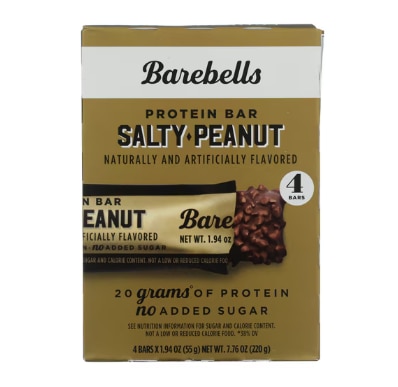Looking for cardio, strength and stamina? Consider following in the footsteps of 50 million joggers across the U.S. Jogging is one of the simplest ways to build sustainable cardiovascular fitness plus strength and stamina.
Even better, all it requires is a pair of comfortable, supportive, durable sneakers, and you can do it almost anywhere, from a treadmill to a sidewalk.
If you’re a beginner, this type of movement can feel intimidating, but remember: it’s not about hitting a certain pace, time or distance. The goal is to form a habit you can stick with that supports your physical and mental well-being. Let’s explore how to ease into a consistent jogging routine tailored to the needs of your own specific body.
Is Jogging Good for You? A Quick Rundown of the Benefits
Any kind of aerobic movement, whether it’s walking, jogging, cycling, swimming or running, increases both cardiovascular and cardiorespiratory function. Not only does this help strengthen endurance, circulation and oxygen uptake, but it also protects against chronic health issues.
Improved health outcomes
If heart health is a concern of yours, jogging is a great form of movement to put your mind at ease. Research points to a direct correlation between aerobic fitness and lower risk of heart disease, including high blood pressure and cholesterol or lipid levels.
Mental health benefits
Aerobic exercise also offers mental health benefits. According to a meta-analysis from JAMA Psychiatry, even small amounts of cardio activity (2.5 hours a week) can lower depression risk factors by 25 percent.
Another recent study shows that neurotransmitters released through consistent exercise help reduce inflammation and regulate circadian rhythms, which, in turn, can stabilize your mood, sustain healthy sleep habits, increase energy, alleviate stress or anxiety and enhance positive feelings associated with self-esteem.
Low and slow is beneficial
As if that’s not enough, Behavioral Sciences Journal found that self-selecting your own level of exertion and intensity (moving at a comfortable pace) is a strong predictor of workout enjoyment, motivation and long-term adherence.
In other words, there’s no reason to push yourself to jog at a speed that feels unmanageable or unsustainable. Listen to what your own body can handle, then make adjustments as necessary.
Beginner-Friendly Tips to Establish a Jogging Routine
Whether you’re a cardio novice or it’s been a while since your last cardio sweat session, here are five beginner-friendly tips to create a consistent and comfortable jogging routine that’s easy to stick with in the long run.
Prioritize both your comfort and safety.
Before you start a new exercise regimen, take precautions to minimize the risk of injuries. Wear comfortable shoes that support your foot size, gait and strike pattern. A running store can help you find the right sneaker for these biomechanics.
When possible, alternate the surface you jog on, too. Softer terrain, such as grass or synthetic tracks, will cause less impact on joints and muscles than hard concrete. If you have pre-existing health conditions, it’s also smart to consult a physician and make sure this form of cardio is a safe option for you.
Don’t forget to warm up and cool down.
Adequately stretching before and after an aerobic workout promotes flexible joints and muscles, Harvard Health explains. This will increase your range of motion, reduce stiffness or tightness, and protect them from the force of impact and exertion.
Spend about two minutes warming up before each jog with mobility stretches in the knees, quads, hips, calves, shoulders, torso, and ankles. Then, cool down with a leisurely walk for five minutes. Building this practice into your routine will ensure the muscles are loose and the joints are lubricated.
Start with a series of walk–jog intervals.
Instead of forcing yourself to maintain a continuous jog for the entire workout session, ease into it with alternating intervals. For example, start at a walking speed for about 3–5 minutes, then accelerate to a jog for another 3–5 minutes, before slowing your pace to a walk again.
Repeat these intervals until you reach 20 minutes, then increase the jogging durations over time as your endurance levels acclimate. Research shows that low-to-moderate interval circuits tend to have a higher compliance rate than more intense, strenuous workouts, so if it’s hard for you to commit to exercising, this approach is an effective way to build up consistency.
Aim for a low-impact, conversational pace.
Keep your jog intervals within “zone two” of exertion—meaning that you notice the effort, but you can still speak in full sentences without overexerting yourself. At a conversational pace, talking should feel possible, even if it’s not necessarily comfortable.
If you start to experience tightness in your chest or shortness of breath, slow the intensity until it’s no longer painful to carry on a conversation. Keep in mind: the goal is not to wear yourself out, but to move at a pace you can sustain. This helps turn a single workout session into a regular practice.
Increase the workload slowly over time.
It can take more than 250 days (about 8.5 months) to form an exercise habit. This sounds like a long time, but it’s important to remember that progress is incremental. The more committed you are to a jogging routine, the more second-nature it will gradually become.
Be patient with yourself and increase the amount of effort or distance only when it feels right, not because you feel pressure to. Doing too much too soon (especially without adequate time to rest and recover) can overload your muscles and cause structural damage to the fibers.
Bottom line: There’s no rush. Take it slow and measure your progress in mood state, energy levels or mental and physical wellness—not in numbers like pace, time, or miles. If you’re not sure when to jog faster or when to pull back, listen to the sensations inside you. The human body knows what it needs, so honor both its abilities and limitations.
Ready to Lace Up Your Sneakers and Give Jogging a Try?
The most effective jogging routine is one you’ll maintain long-term. Focus on keeping it safe, flexible, consistent and most of all, enjoyable. Start at an easy interval pace for a few minutes at a time, then challenge yourself with incremental shifts as you build more stamina.
This is a continual process without an arbitrary finish line, and each step forward is a boost in your cardiovascular fitness, mental resilience, and overall well-being.
Featured Products



The post The Gentle Art of Jogging: How to Move, Breathe and Feel Better first appeared on The Upside by Vitacost.com.

